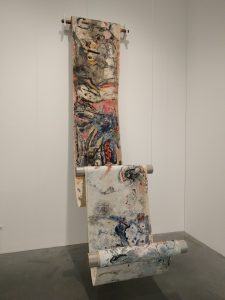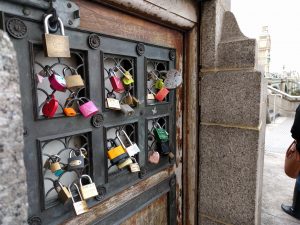
A few months back, I went to the Tate Modern with my friend Sophie and found a surprise in the galleries – a painted strip of paper on a roller. It was a piece I’d read about but hadn’t realised was on display. This was Pinot Gallizio’s Industrial painting from 1958, made on a piece of canvas, rolled up and intended to be sold by the meter.
One of the most fascinating thing about the Situationists is how relatively little work they produced to demonstrate their theories. Much ink has been spilled on DeBord’s psychogeography, for example, but the groups associated with him produced few examples of the form: their practical work is far outweighed by their ideas.
Gallizio described himself as “archaeologist, botanist, chemist, parfumer, partisan, king of the gypsies” – to which McKenzie Wark suggests adding “chancer, amateur, dandy and dilettante”. He is famous as one of the founding members of Situationist International. The group was formed in July 1957 as a unification of several small avant-garde groups. One of them, Ralph Rumney’s ‘London Psychogeographical Association’, was formed on the occasion to make the event look more supported than it was.
Gallizio’s ‘Industrial Painting’ was first exhibited at a Turin Gallery in May 1958. The painting was unrolled and stuck on the walls, with sections sold by the meter. Models paraded in the gallery wrapped in the fabric. As well as being sold in the gallery, sections of the fabric was sold in a street market.
Another of Gallizio’s fascinations was gypsy communities. He offered a home to a gypsy community and this inspired Dutch artist Constant Nieuwenhuys. A recent article on Atlas Obscura detailed Nieuwenhuys’ work on nomadic architecture and his playful and visionary city designs.
Gallizio’s work was intended as a protest against the commodification of art. he produced original work through mechanical means, offering it for sale by the foot. But everything gets recuperated. Gallizio’s work is now an artifact, to be expertly displayed in a gallery. Maybe it should be chopped up and sold? Sections handed to people as they enter the gallery. Maybe the idea of this piece is more important than the piece itself.
